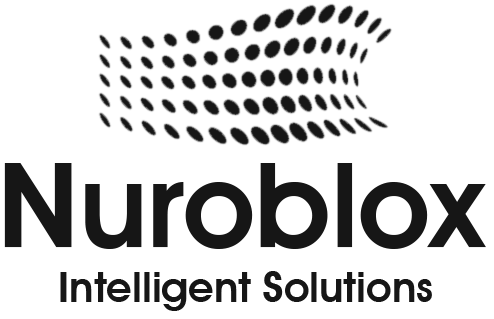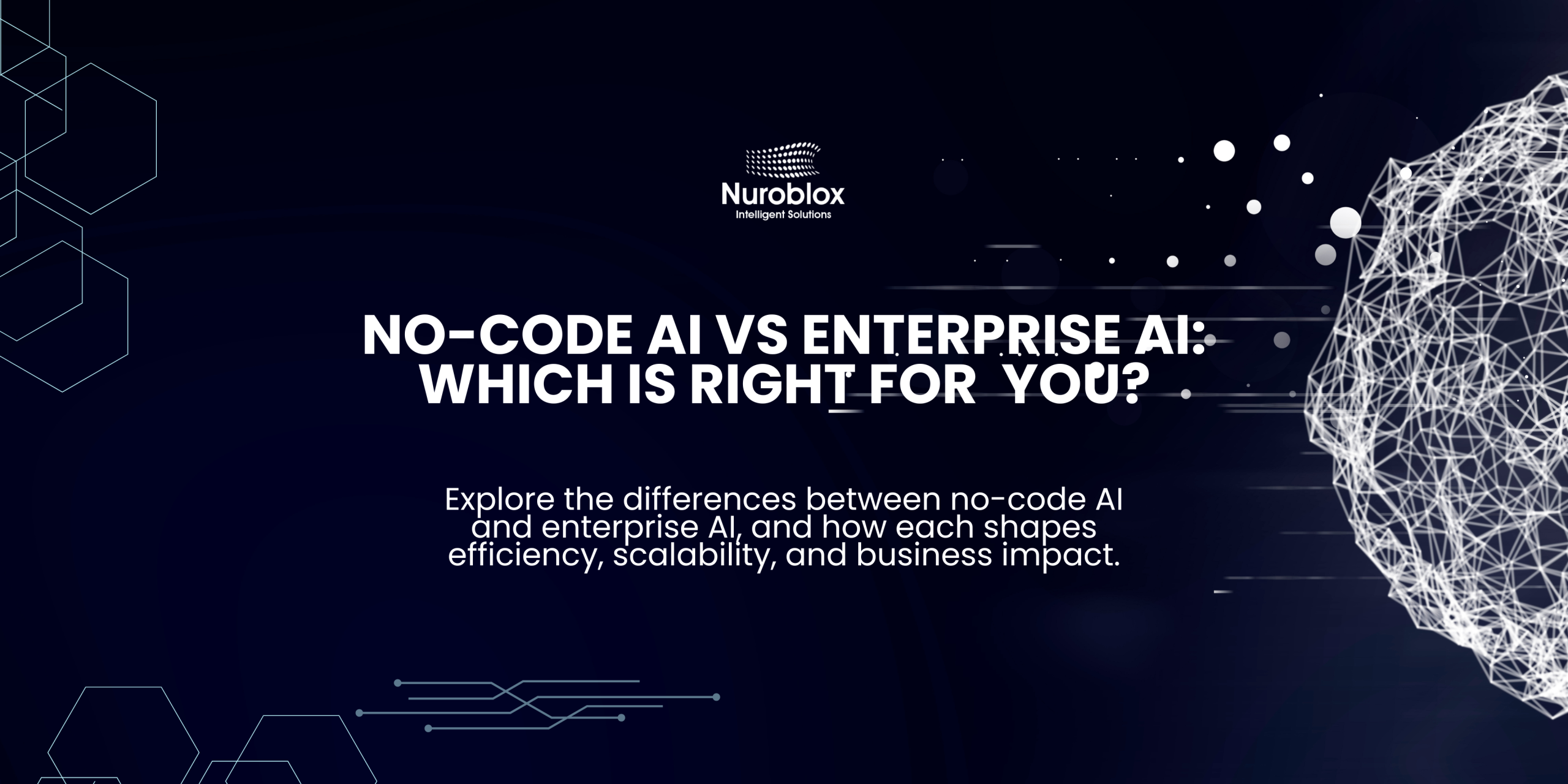No-Code AI vs Enterprise AI: Which Is Right for You?
The pressure on businesses to adopt artificial intelligence is no longer a gentle nudge; it’s a powerful force reshaping industries. In this new landscape, the question is not if you should implement AI, but how. Two dominant paths have emerged for this technological journey- the accessible world of no-code AI automation and the powerful, custom-built realm of enterprise AI integration. Choosing the right path can be the difference between a successful AI initiative that drives growth and a costly misstep. This article will provide a comprehensive comparison to help you determine which approach best fits your business’s unique needs and strategic goals.
The AI Imperative – Why Businesses Can’t Afford to Wait
In today’s competitive market, efficiency and innovation are paramount. Businesses are increasingly turning to AI to gain an edge. According to Forrester’s 2023 Data and Analytics Survey, 33% of global data and analytics decision-makers say that improving operational efficiency and effectiveness is a primary benefit of integrating AI technologies into their operations. AI is no longer a futuristic concept but a practical tool for streamlining processes, reducing costs, and unlocking new opportunities.
Understanding No-Code AI Automation – Democratizing AI for All
No-code AI is revolutionizing how businesses approach automation by making AI accessible to non-technical users. These platforms offer intuitive, visual interfaces with drag-and-drop functionality and pre-built models, allowing users to create and deploy AI-powered applications without writing a single line of code.
The Key Benefits of No-Code AI
- Speed and Agility – One of the most significant advantages of no-code AI is the speed of development. Traditional AI projects can take months or even years, but no-code platforms enable businesses to create and deploy solutions in a matter of days or weeks. This agility allows for rapid prototyping and iteration, helping companies adapt quickly to changing market conditions.
- Cost-Effectiveness – No-code AI significantly lowers the financial barrier to AI adoption. It reduces the need for expensive, specialized AI talent and minimizes development and maintenance costs. Many platforms offer flexible pricing models, including free tiers or low-cost subscriptions, making them ideal for businesses with limited budgets.
- Empowerment of Business Users – By putting AI tools directly into the hands of “citizen developers” the business users who know their workflows and pain points best no-code platforms foster a culture of innovation and continuous improvement. This empowerment leads to more relevant and effective solutions.
- Scalability for Growth – Modern no-code platforms are designed to scale with your business. They can handle increasing data volumes and more complex workflows without requiring a complete overhaul of the system.
Who is No-Code AI Best For?
No-code AI is an excellent choice for –
- Small to medium-sized enterprises (SMEs) looking to leverage AI without a significant upfront investment in talent or infrastructure.
- Specific departments within larger organizations, such as marketing, HR, or finance, that need to automate tasks and streamline workflows.
- Businesses that want to rapidly prototype and test AI solutions before committing to a larger, more resource-intensive project.
Enterprise AI Integration – Building a Powerful, Custom AI Engine
Enterprise AI integration represents a more traditional, top-down approach to implementing artificial intelligence. This path involves building custom AI solutions from the ground up and deeply embedding them into a company’s core systems and processes. This approach requires significant investment in data scientists, machine learning engineers, and infrastructure.
The Strategic Advantages of Enterprise AI
- Deep Customization and Control – The primary advantage of enterprise AI is the ability to create highly customized solutions that address unique and complex business challenges. This level of tailoring is often not possible with off-the-shelf no-code platforms.
- Enhanced Performance and Scalability – Custom-built AI models can be optimized for specific datasets and use cases, leading to superior performance. Enterprise-grade solutions are also designed to handle massive volumes of data and can be scaled to meet the needs of the largest organizations.
- Competitive Differentiation – By developing proprietary AI capabilities, companies can create a sustainable competitive advantage that is difficult for rivals to replicate. This is especially true for businesses whose core value proposition is tied to data and analytics.
- Robust Data Governance and Security – Enterprise AI provides greater control over data governance, security, and compliance. This is a critical consideration for companies in highly regulated industries like finance and healthcare.
Who Needs Enterprise AI?
Enterprise AI is the right choice for –
- Large enterprises with complex, unique operational needs that cannot be met by standard solutions.
- Companies in highly regulated industries that require strict control over data and compliance.
- Businesses that are aiming to build a long-term, strategic advantage through proprietary AI and data-driven innovation.
A Head-to-Head Comparison – No-Code AI vs. Enterprise AI
To help you better understand the trade-offs, here’s a direct comparison of the two approaches across several key factors –
| Feature | No-Code AI Automation | Enterprise AI Integration |
| Development Time & Cost | Low cost, rapid deployment (days to weeks) | High cost, longer deployment (months to years) |
| Required Expertise | No coding skills required; accessible to business users | Requires specialized talent (data scientists, ML engineers) |
| Customization & Flexibility | Limited to platform features and pre-built models | Highly customizable to meet specific business needs |
| Scalability | Scalable for many business needs, but may have limitations | Highly scalable to handle massive datasets and complex tasks |
| Integration | Often has pre-built connectors, but can be limited | Deep integration with existing systems and workflows |
| Security & Governance | Reliant on the platform’s security measures | Full control over data governance and security protocols |

The decision between no-code AI and enterprise AI is not a simple one. To make the right choice, consider the following questions –
- What is the scale and complexity of the problem you are trying to solve? For straightforward automation of repetitive tasks, no-code AI is often sufficient. For complex, mission-critical processes, a custom enterprise solution may be necessary.
- What are your available resources? Consider your budget, in-house technical expertise, and the availability of data scientists and engineers.
- What is your timeline for implementation and seeing results? If you need a quick win and a fast time-to-value, no-code AI is the clear winner. If you are playing the long game and building a strategic asset, enterprise AI may be the better investment.
- How critical is deep customization for your competitive strategy? If your ability to compete depends on a unique, proprietary AI capability, then enterprise AI is the way to go.
- What are your long-term AI goals? Are you looking for incremental improvements in efficiency, or are you aiming for a fundamental transformation of your business model?
The Future is Hybrid – Bridging the Gap
For many organizations, the optimal solution may not be an either/or choice but a hybrid approach. Businesses can leverage no-code AI platforms for quick wins and to empower business units to automate their own workflows, while simultaneously investing in a long-term enterprise AI strategy for core, strategic initiatives. This hybrid model can provide the best of both worlds – the speed and agility of no-code with the power and customization of enterprise AI.
From Automation to Transformation
The journey into AI is a marathon, not a sprint. The choice between no-code AI and enterprise AI integration is a critical one, and there is no one-size-fits-all answer. It is a strategic decision that depends on your company’s unique context, resources, and ambitions. By carefully evaluating your needs and goals, you can select the path that will not only automate your processes but also transform your business for the future.
As you look at your own organization, where do the biggest opportunities for AI-driven transformation lie, and which path will get you there most effectively?


